Text
Food Waste -- What’s Working? And What’s Not?
By: Cara Van Dorn
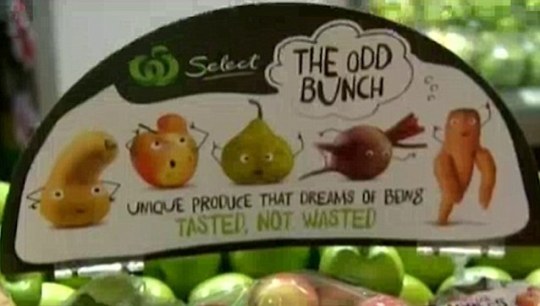
Photo: http://www.dailymail.co.uk/news/article-2860240/Woolworths-offer-ugly-fruit-veg-cheaper-price-three-months-Harris-Farm.html

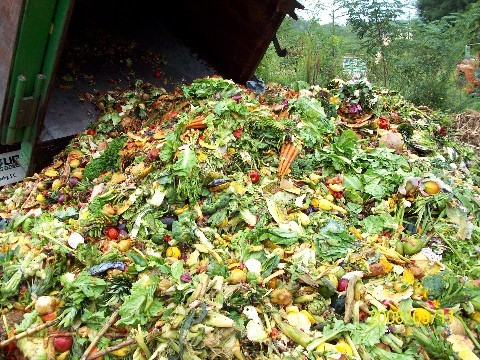
Photo:
http://keepcockecountybeautiful.com/composting-of-food-waste/


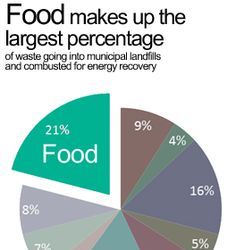



Photo: http://www.farmbasededucation.org/page/q-a-with-chelsey-simpson


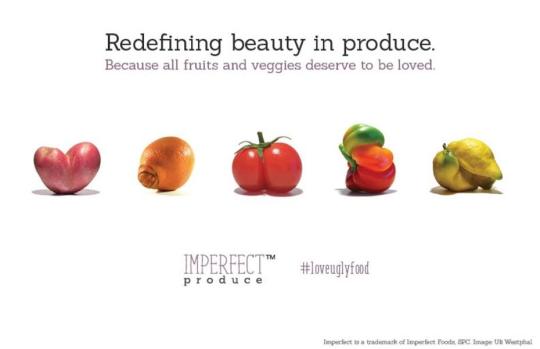






0 notes
Text
Gone Fishing: The USDA Issues Final Rule Regarding Catfish Inspections
Now and then we all love a good fillet of catfish fried in corn flour batter interspersed with a healthy dosage of salt & pepper. But what is a catfish? Where does it come from? And how do we know that the fish known for eating anything is safe to eat?[i] These are all questions that the USDA’s Food Safety and Inspection Service set out to answer when it promulgated its new rule providing for the inspection of all species of the order of Siluriformes.[ii] Catfish inspection has increased since it was mandated by an amendment to the Federal Meat Inspection Act (FMIA) by the 2008 Farm Bill.[iii] After the Farm Bill mandated that the FSIS inspect “catfish” the agency prepared and submitted for public comment a system for inspection that included two proposed definitions for catfish.[iv] The first definition was limited to the North American species normally called catfish (Ictalirudae).[v] The second definition proposed definition was the entire order of Siluriformes, which would include all other species in the world.[vi] The questions for the 2011 proposed rule were 1) Does our application of meat inspection work well for fish? And 2) Does the word “catfish” in the 2008 Farm Bill mean the common usage or all species that are technically catfish? The FSIS got their wish for a clear definition when the 2014 Farm Bill replaced “catfish” in the FMIA with “all fish of the order Siluriformes”.[vii] The new final rule put forward by the FSIS is intended to adopt the 2011 public rule using the new statutory definition.[viii] That means that catfish in the US, whether produced here or imported, will comply with FSIS inspections.

[ix] Maura McEvoy

[x]Wikimedia CC
Is the FSIS’ obligation to inspect all catfish good, bad, or just another regulation with its costs and benefits? And most importantly, what could this mean for the average American? The biggest benefit to the USDA’s meet inspections for catfish and catfish facilities is the higher standard required to sell catfish in the US. The application of FSIS inspections to foreign produced catfish is intended to counter the potential public health risks of chemical and microbiological contaminants in catfish.[xi] Congress, and therefore the FSIS, are concerned about traces of chemicals that can be harmful if consumed.[xii] Also, the FSIS’s proposed rules each note the risk of catfish contamination with Salmonella, Listeria, and E. coli.[xiii] The effort of congress and the FSIS to prevent unsafe fish from being sold in the US may be warranted, but perhaps not for catfish alone. For example, several brands of frozen whitefish sold in North Carolina were recently found to be contaminated with formaldehyde.[xiv] Cod is covered by FDA inspections which are less stringent and, in the case of whitefish, do not test for formaldehyde.[xv] Perhaps the reason catfish are now subject to FSIS inspection is the volume of foreign catfish imported to the US each year and congress’ desire that it be subject to more thorough inspection.[xvi] So, if there’s a potential need for treating catfish like meat and subject to FSIS then what’s it going to cost?[xvii]

[xviii] Ken Hammon/USDA
Well, cost may vary. The final rule issued by FSIS believes that the net cost to the government will be $1,440,960 with an added cost to producers and importers of $0.0008 loss per pound of catfish processed.[xix] Critics such as Democratic Senator Jeanne Shaheen of New Hampshire are concerned about the potentially higher costs of implementing the inspection process for catfish; estimating an actual expense of $20 million in start-up costs and $15 million each subsequent year.[xx] Other critics like the president of the National Fisheries Institute, John Connelly, is concerned that the inspection system is premised on food safety as much as it is protectionist economics.[xxi] If it is in fact true that the FDA only examines about 2% of imported food and that statistic carries over to imported catfish then very few catfish are currently inspected.[xxii] That would make the greater requirements of FSIS inspection a significant change in the burden placed on catfish importers. This would protect domestic catfish producers by pushing up the cost of cheap catfish imports. Whether the addition of USDA inspections will prevent contaminated catfish from being sold in the US seems to depend upon who you ask.[xxiii] It’s unclear whether you should feel any safer next time you order the salt & peppered catfish. The new rule tries to make all catfish sold in the US safer, but at some added costs. Whether the new rule is good or bad will depend upon how much you value preventative measures compared to how you evaluate the price tag on your catfish dinner. If the FSIS’s $0.008 estimated increase in cost per pound produced is accurate then there is not much to fear for consumer demand of catfish. The overall effect of the rule may be to provide some preventative safety measures through inspection and a potential effect on who is willing to meet that demand. In that circumstance you will likely only notice the increase if you eat pound upon pound of catfish then maybe you’ll notice the eventual increase in price.
[i] See http://www.whatdotheyeat.info/what-do-catfish-eat/.
[ii] See generally 80 FR 75590 and 76 FR 10434.
[iii] See 80 FR 231 at 75590 available at http://www.fsis.usda.gov/wps/wcm/connect/878aa316-a70a-4297-b352-2d41becc8f73/2008-0031F.pdf?MOD=AJPERES. The Farm Bill is a regularly occurring law that updates broad national policies ranging from agriculture to conservation. See - http://www.ag.senate.gov/issues/farm-bill.
[iv] 80 FR 75590 available at http://www.fsis.usda.gov/wps/wcm/connect/878aa316-a70a-4297-b352-2d41becc8f73/2008-0031F.pdf?MOD=AJPERES.
[v] Id.
[vi] Id.
[vii] Id.
[viii] Id.
[ix] Image Credit from Maura McEvoy. Image Source: http://www.grandparents.com/food-and-leisure/recipes/recipe-fried-catfish-besh-family-table
[x] Swai – a species of catfish from southeast asia. Image Source: https://en.wikipedia.org/wiki/Iridescent_shark#/media/File:Pangasiidae_-_Pangasius_hypophthalmus.JPG
[xi] 80 FR 75593 (see note ii).
[xii] Id.
[xiii] Id. (citing the 2011 FSIS rule at 76 FR 10439).
[xiv] http://www.wcnc.com/story/money/consumer/2015/04/30/formaldehyde-found-in-frozen-fish/26679217/
[xv] Id.
[xvi] E.g. Pangasius (the larger cousin of swai) imports rose from 7 million pounds in 2004 to 215 million pounds in 2014. See http://www.wsj.com/articles/u-s-catfish-fight-expected-to-sink-a-popular-import-1427131633.
[xvii] But see also this GAO study arguing against USDA inspection of catfish as wasteful and redundant. http://www.gao.gov/assets/600/590777.pdf
[xviii] Image Credit Ken Hammon/USDA. A catfish farm on the Mississippi River, what a US catfish farm can look like. Image Source: Bricannica.com - https://www.britannica.com/topic/aquaculture/images-videos/Workers-harvesting-catfish-from-a-fish-farm-in-Mississippi-US/117630.
[xix] 80 FR 75591.
[xx] http://www.foodsafetynews.com/2015/11/usdas-domestic-and-foreign-catfish-inspections-will-begin-in-march-2016/
[xxi] http://www.nytimes.com/2015/11/26/us/politics/new-catfish-inspections-stir-debate-over-safety-vs-trade.html?_r=0.
[xxii] See Id.
[xxiii] See GAO study supra note xvii.
0 notes
Photo

Farm to School Advocacy. 2015. www.farmtoschool.org (accessed December 2, 2015).
1 note
·
View note
Text
The Farm to School Program is Running Out of Time
By Joey Burtner
The Richard B. Russell National School Lunch Act (42 U.S.C. 1769) “required USDA to provide technical assistance, research, and information to increase awareness of and publication in farm to school programs among agricultural producers.” (H.R. 1061 2015) Simply put, it puts locally sourced foods on children’s plates. The National Farm to School Network calls it a “common sense approach to child nutrition”. (NFSN 2015) Over the past 5 years, the Farm to School program has improved public health, local economies, environment, and increased education. (NFSN 2015)
The Farm to School program is an extension of the Health, Hunger Free Kids Act which allows the USDA to set nutritional standards for school lunches. The USDA has forced portion of fruits and vegetables onto student lunches. (PL 111-296 2010) Some would argue that enforcing fruit and vegetable requirements on children increases food waste because kids don’t like it. But who was never forced to eat your vegetables by your parents when you were a kid? However, those naysayers would be wrong. A recent study by Harvard School of Public Health found that there is no change per person in the amount of food wasted. The study found that there was an actually decrease in the amount of vegetable waste in schools. Vegetable waste shrunk by 15% after the Act went into affect. Harvard attributes food waste to lack of quality and palatability. (Cohen, et al. 2014) A separate study proved that both quality and palatability increase with locally sourced produce. (Bratanova, et al. 2015)
As far as local economies are concerned, Farm to school is a great idea. The most recent USDA farm to school census that at least 42,000 schools spent over $600,000,00 on local food in the 2013-2014 school year. (Giordano 2015) That’s all money that farmers can now spend in the respective economies rather than some big agriculture company from another state.
Locally produced foods are good for the environment by reducing waste. Much of our produce stays in the fields simply because it costs too much to ship it. (Bloom 2011) Using that produce closer to home will inevitably cause less of that produce to waste away in the fields. Take Boston, MA resident Karl Dias for example. He buys unwanted damaged locally grown tomatoes to make marinara that he then provides to schools in the Boston area. (Kurland 2015) His sauce wouldn’t be available if he never pitched the idea to the Easter Massachusetts Farm to School program director. (Kurland 2015) Now these otherwise wasted tomatoes increase revenue for local farms and help reduce food waste.
Part of the Farm to Food program includes educating children and administrators on healthy eating. The program provides educational material and webinars as well as funds student run gardens. (USDA 2015) School gardening programs provides hands-on activities to learn more about plants and nutrition. (Gavan 2015)
The current proposal is trying to keep all these benefits going as the Richard B. Russell National School Lunch Act expires in 2015. It expands access to summer food service programs and early care and afterschool portions of the child and adult care food program (H.R. 1061 2015). The Summer Food Service provides more than 200 million free meals while school is not in session. (USDA 2015) Likewise, the Child and Adult Care Food Program provides meals to over 3.3 million children and 120,000 adults. (USDA 2015) The amendment also doubled the maximum amount of grant money awarded per site to $200,000 but limited the term to three years. Total support from the Secretary of the Treasury will increase from $5,000,000 to $15,000,000. (H.R. 1061 2015) This sizable increase might still not be enough. The National Farm to School Network estimates the need at 5 times the original amount, around 25,000. Which still leaves us 10,000 short of demand for the highly competitive grant funds. But the most important amendment is that the bill will be extended five more years, from 2011-2015 to 2016-2021. (H.R. 1061 2015)
Where is this seemingly indispensable bill at now? It was originally proposed to the House of Representatives on February 25, 2015 (H.R. 1061 2015) It was immediately referred to the house committee on education and the workforce (H.R. 1061 2015). Then, it was referred to subcommittee on early childhood, elementary, and secondary education on 4/29/15 where it has resided ever since (H.R. 1061 2015). Maybe there is no rush since the Secretary of Treasure transfers the $5,000,000 budget allocation to the Farm to School program on October 1 of every year. (42 U.S.C 1769 2010) There may still be funds for the beginning of 2016 but Congress needs to make a decision soon because the original bill expires at the end of 2015. We can’t afford to lose a crucial bill that promotes locally owned small farms and provides under privileged children with fresh healthy fruits and vegetables grown right down the road.
Works Cited
· Bloom, Jonathan. American Wasteland: How America Throws Away Nearly Half of Its Food . Da Capo Lifelong Books, 2011.
· Bratanova, Boyka, Christin-Melanie Vauclair, Nicolas Kervyn, Sandy Schumann, Robert Wood, and Oliver Klein. "Savouring Morality. Moral satisfaction renders food of ethical origin subjectively tastier. ." Appetite 91 (August 2015): 137-149.
· Cohen, Juliana, Scott Richardson, Ellen Parker, Paul Catalano, and Eric Rimm. "Impact of the New U.S. Department of Agriculture School Meal Standards on Food Selection, Consumption, and Waste." American Journal of Preventive Medicine, March 2014: 388-394.
· Farm to School Act of 2015. H.R. 1061 (114th Congress, 2015).
· Gavan, Hillary. Farm to School program grows. November 11, 2015. www.beloitdailynews.com (accessed December 2, 2015).
· Giordano, Olivia. Farm to School Programs Minimize Food Waste adn Maximize Health. October 21, 2015. www.thedailymeal.com (accessed December 2, 2015).
· Healthy, Hunger Free Kids Act. PL 111-296 (111th congress, December 13, 2010).
· Kurland, Ann Trieger. Ugly tomatoes produce marinara students will enjoy. November 10, 2015. www.bostonglobe.com (accessed December 2, 2015).
· NFSN. Farm to School Act of 2015. 2015. www.farmtoschool.org (accessed December 2, 2015).
· —. Farm to School Advocacy. 2015. www.farmtoschool.org (accessed December 2, 2015).
· The Public Health and Welfare. Chapter 13 - School Lunch Program (US Code, 2010).
· USDA. Child and Adult Care Food Program. 2015. www.fns.usda.gov (accessed December 2, 2015).
· —. Summer Food Service Program. 2015. www.fns.usda.gov (accessed December 2, 2015).
· USDA. The Farm to School Program Four years in Review. brochure, USDA, U.S. government, 2015.
3 notes
·
View notes
Text
Adding “Added Sugar” to Nutrition Facts Labels is a Sweet Idea
By Kristin Smith
More than twenty years have passed since the last major update to a label that appears on most food products we purchase and consume. The Food and Drug Administration’s (FDA) attempt to revise and update the Nutrition Facts label (NFL) has been a long and arduous process, but has finally made it to the final rule stage of the regulatory process.

(Image Source: http://www.womenshealth.gov/fitness-nutrition/how-to-eat-for-health/food-labels.html)
The FDA first issued its proposed rule regarding changes to the Nutrition Facts label (NFL) in March of 2014.[1] It then solicited comments from interested parties until June 2014, then closed the comment period for over a year while it considered the feedback it had received. After this delay, in late July 2015 the FDA issued a supplemental proposed rule that suggested additional changes to the NFL. The final comment period has since closed, and the FDA has indicated that it will take final action in March of 2016.[2]
This process has many wondering if the FDA will adopt its proposed rules or make additional changes.
What should the FDA do?
If the FDA adopts all of their proposals that they sought comment on, the Nutrition Facts label stands to change quite a bit. Some of the major changes are as follows:[3]
Changing the design of the label to emphasize calories per serving and the actual serving size
Updating serving size requirements to more accurately reflect today’s eating habits
Changing the design of the label to place percent daily values (PDV) right next to the nutrient they represent for enhanced readability
Including “added sugars” on the label under the heading total sugars
Including a PDV for added sugars based on consuming no more than 10% of daily calories from added sugars
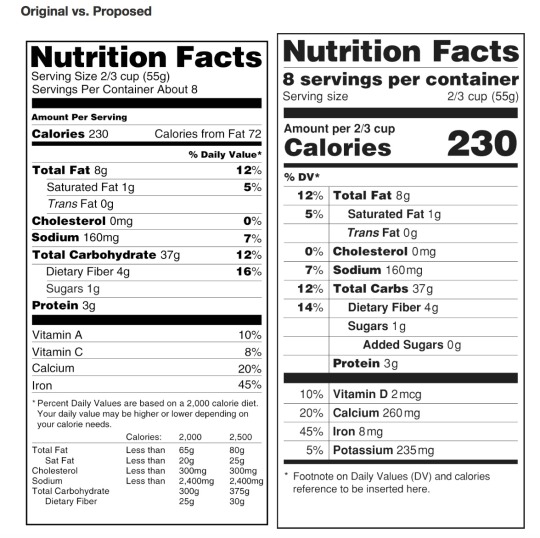
(Image Source: http://www.fda.gov/Food/GuidanceRegulation/GuidanceDocumentsRegulatoryInformation/LabelingNutrition/ucm385663.htm#images)
The aspect of the new labels that has received a lot of pushback from industry and manufacturing associations is the requirement that “added sugars” be listed, along with a percent daily value. The FDA has proposed to base the PDV on data from the 2015 Dietary Guidelines Advisory Committee Report suggesting that added sugars account for no more than 10% of total daily caloric intake.[4]
The American Beverage Association (ABA), the trade organization that represents “Big Soda” producers, mainly Coca-Cola and PepsiCo,[5] has submitted comments on the proposed rules. They state that although they “applaud the FDA’s efforts…to assist consumers in maintaining healthy dietary practices,” they vehemently oppose the required declaration of “added sugars” on the NFL.[6] They also claim that the science behind setting the percent daily value for added sugars at 10% is lacking.[7]
The ABA would understandably be opposed to such a labeling requirement, since their soda labels would then have to show that all the sugars are added. Big Soda companies know that this type of labeling requirement will reduce sales, and therefore their profits.

(Image Source: http://www.epiceveryrep.com/much-sugar-soda/)
While Big Soda would be harmed by these new sugar labeling requirements, the American public would greatly benefit. Consumer advocacy groups, such as the Center for Science in the Public Interest, claim that leaving “added sugars” off of nutrition labeling “is an omission of key public health importance given the prevalence of cardiovascular disease, obesity, type 2 diabetes, and tooth decay in the United States linked to such sugars in the diet.”[8]
The FDA is responsible for protecting the public health of Americans, not the profits of manufacturers of sugary products.[9] Given the prevalence of these health concerns in the American public and an increasing consumer desire to know more about our food, the FDA should finalize all of its proposed rules without caving to industry pressure to relax requirements.
[1] “Food Labeling: Revision of the Nutrition and Supplemental Facts Labels” accessed at http://www.regulations.gov/#!docketDetail;D=FDA-2012-N-1210.
[2] Id.
[3]“Proposed Changes to the Nutrition Facts Label.” U.S. Food and Drug Administration. http://www.fda.gov/Food/GuidanceRegulation/GuidanceDocumentsRegulatoryInformation/LabelingNutrition/ucm385663.htm#Summary.
[4] “Food Labeling: Nutrition and Supplemental Facts Labels; Revision” accessed at http://www.regulations.gov/#!documentDetail;D=FDA-2012-N-1210-0537.
[5] “Active Members.” American Beverage Association. http://www.ameribev.org/members/active-members/.
[6] “Comment from the American Beverage Association.” Aug 20, 2014. Found at http://www.regulations.gov/#!documentDetail;D=FDA-2012-N-1210-0443.
[7] “Comment from the American Beverage Association.” Oct 13, 2015. Found at http://www.regulations.gov/#!documentDetail;D=FDA-2012-N-1210-0799.
[8] “Comment from the Center for Science in the Public Interest.” Oct 16, 2015. Found at http://www.regulations.gov/#!documentDetail;D=FDA-2012-N-1210-0698.
[9] “What We Do.” U.S. Food and Drug Administration. http://www.fda.gov/AboutFDA/WhatWeDo/.
0 notes
Text
Humane Slaughter for the Nation’s Number One Food Animal
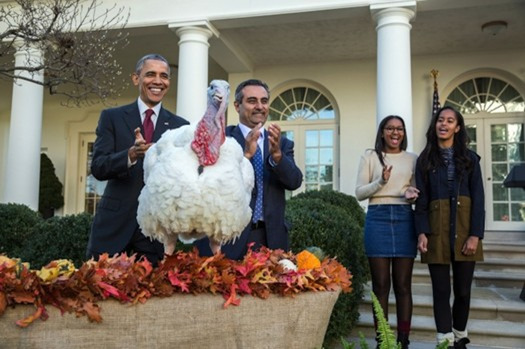
Photo credit: Pete Souza, Official White House Photo)
In a Rose Garden ceremony on November 25, 2015, President Obama and his two daughters continued the tradition of pardoning the National Thanksgiving Turkeys.[1] Although George H.W. Bush was the first president to officially pardon a turkey in 1989, the tradition dates back much further to rumors of Abraham Lincoln’s son ,Tad, convincing his father to pardon the family’s turkey, stating it had as much a right to live as anyone.[2] Although the Lincolns may have gone vegetarian that Thanksgiving, the Obamas replaced the pardoned birds and, like most American families, celebrated the holiday with a roast turkey.[3] While grocery shopping this holiday season, consumers may want to pause and consider the path chickens and turkeys take before they reach the dining room table.
Since the early 1900s, chicken consumption in America has been on the rise, surpassing pork and beef in recent years.[4] From January to September of this year, 21.5 million cattle, and 85 million hogs were slaughtered in the United States.[5] During the same nine months, 6.8 billion chickens and turkeys were slaughtered, 316 times the number of cattle.[6] In 2014, the average American consumed over fifty-eight pounds of chicken,[7] contributing to the poultry industry’s total value of over $48 billion.[8] The poultry industry has a significant presence in our own state, North Carolina. It is the number one agricultural industry in the state, with an economic impact of over $34 billion.[9] In 2014, North Carolina was ranked third in the nation for broiler production,[10] and second in turkey production.[11]
While cows and pigs fare a little better, there are no federal regulations regarding humane handling and slaughter of poultry.[12] The main federal regulation governing poultry production is the Poultry Products Inspection Act (PPIA), enacted in 1957 to protect consumers and poultry producers from health and economic harms resulting from adulterated or misbranded poultry products.[13] However, the PPIA does not contain any requirements for humane treatment or slaughter of birds.[14] The typical method for commercial poultry slaughter involves shackling fully conscious birds upside-down by their legs on a moving belt.[15] The birds are immobilized, but not necessarily rendered unconscious, by dipping their heads into salted water with an electric current.[16] Their carotid arteries are then cut by machine or by hand, and after they have died from exsanguination, they are dipped in a scalding tank to remove their feathers.[17]
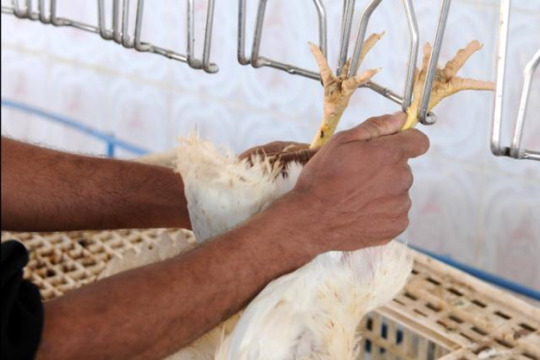
(photo credit: http://www.army.mil/article/33101/Creating_profit_through_poultry/)
The treatment and slaughter of other animals raised for meat are governed by the USDA’s Humane Methods of Slaughter Act (HMSA).[18] Originally enacted in 1958, the HMSA requires that “cattle, calves, horses, mules, sheep, swine, and other livestock…. are rendered insensible to pain by a single blow or gunshot or an electrical, chemical or other means that is rapid and effective, before being [slaughtered].”[19] The only enforcement mechanism of the HMSA of 1958 was the requirement that the federal government only purchase meat that met the humane slaughter standards.[20]
In 1978, Congress enacted another statute under the name HMSA that incorporated the humane slaughter requirements into the Federal Meat Inspection Act (FMIA) and repealed the only enforcement provision from the HMSA of 1958.[21] The FMIA requires inspectors to oversee slaughter methods for all “amenable species.”[22] Poultry is not currently included in the definition of “amenable species,” but Congress gave the Secretary of Agriculture authority to add any additional species he sees fit.[23] The humane slaughter provisions of the FMIA can be enforced by withholding of necessary inspection services for violations involving “cattle, sheep, swine, goats, horses, mules, or other equines,”[24] or with criminal penalties of “imprisonment for not more than one year, or a fine of not more than $1,000, or both.”[25]
The USDA has maintained a frim position that poultry is not covered under the humane slaughter requirements of the HMSA or the FMIA, and that humane slaughter is not required under the PPIA. In response to public and Congressional concern over the humane treatment of poultry, the Food Safety Inspection Service (FSIS), a division of the USDA, issued a public notice in 2005 reminding poultry slaughter establishments that there is no federal humane handling and slaughter statute for poultry.[26] FSIS claims that producers who comply with “good commercial practices” ensure that birds are treated humanely because birds that are bruised or die of causes other than slaughter are banned from sale.[27]

(photo credit: http://npaper-wehaa.com/pub-files/13287235204f32b64017593/pub/Hartford-Magazine-November-2012/lib/1350059946507847aa59b16.jpg)
There have been several organized efforts to spur the USDA to include poultry under the HMSA or to require humane slaughter under PPIA, but so far, none have been effective. In 1995, FSIS denied a request by the Animal Legal Defense Fund to add humane slaughter to the PPIA, reasoning that they were not authorized to do so because “there is no specific federal humane handling and slaughter statute for poultry.”[28] In the 2009 case Levine v. Vilsack, individual poultry consumers, animal rights organizations, and poultry workers organizations argued that poultry should be included under the term “livestock” in the HMSA of 1958.[29] Workers in poultry processing plants are injured at a rate 50% higher than other U.S. workers, largely due to rapid line speeds, and would benefit from increased oversight and humane slaughter regulations.[30] Ultimately, the Ninth Circuit Court of Appeals concluded that the petitioners lacked standing because their injury was not likely to be redressed by a favorable decision from the court.[31] This was due to the fact that the HMSA of 1958 no longer included an enforcement mechanism, so even if the court ruled in favor of the petitioners, the only way their injuries could be redressed would be through a series of hypothetical acts by the Secretary of Agriculture (e.g. the Secretary could choose to enforce humane slaughter for poultry under FMIA).[32]
A few states, like California[33] and Indiana,[34] have adopted their own version of the HMSA that require humane slaughter of poultry. However, these laws will have little effect unless top producing states also adopt humane slaughter requirements for poultry. Assuming trade organizations will strongly oppose such statutes and pressure state law makers, it is unlikely that states like North Carolina will make the change.
In light of the obstacles for state law makers and the USDA’s firm stance against interpreting the HMSA to include poultry and refusal to amend the PPIA to include a humane slaughter provision, it appears that legislative action on the federal level is necessary to require humane treatment and slaughter of poultry. Such legislation was proposed in 1993, but failed to pass the House Subcommittee on Livestock due to opposition from the National Turkey Federation, the National Broiler Council, and the American Meat Institute.[35] However, persistence on the part of concerned consumers, animal rights activists, and poultry workers could be the necessary force to spur future legislation.
[1]The White House, The President Pardons the National Thanksgiving Turkey 2015, (Nov. 25, 2015) https://www.whitehouse.gov/photos-and-video/video/2015/11/25/president-pardons-national-thanksgiving-turkey-2015.
[2] Megan Slack, The Definitive History of the Presidential Turkey Pardon, The White House, (Nov. 23, 2011) https://www.whitehouse.gov/blog/2011/11/23/definitive-history-presidential-turkey-pardon.
[3] See Id.
[4] Eliza Barclay, A Nation of Meat Eaters: See How it All Adds Up, National Public Radio (Aug. 11, 2014), http://www.npr.org/sections/thesalt/2012/06/27/155527365/visualizing-a-nation-of-meat-eaters.
[5] United States Department of Agriculture, Economic Research Service, Livestock & Meat Domestic Data (last updated Oct. 28, 2015), http://www.ers.usda.gov/datafiles/Livestock_Meat_Domestic_Data/Meat_statistics/Livestock_and_poultry_slaughter/SlaughterCounts.pdf.
[6] See Id.
[7] U.S. Poultry & Egg Association, Economic Data, https://www.uspoultry.org/economic_data/.
[8] United Sates Department of Agriculture, National Agricultural Statistics Service, Poultry Production and Value 2014 Summary at 5, (2015), http://usda.mannlib.cornell.edu/usda/current/PoulProdVa/PoulProdVa-04-30-2015.pdf.
[9] North Carolina Poultry Federation, Poultry Facts, http://www.ncpoultry.org/facts/facts.cfm (last visited November 29, 2015).
[10] See United Sates Department of Agriculture, National Agricultural Statistics Service, Poultry Production and Value 2014 Summary at 7, (2015), http://usda.mannlib.cornell.edu/usda/current/PoulProdVa/PoulProdVa-04-30-2015.pdf.
[11] See Id. at 9 (North Carolina was second in number of pounds produced and value, but third in number raised).
[12] Treatment of Live Poultry Before Slaughter, 70 FR 56624 at 56624 (Sept. 28, 2005).
[13] 21 U.S.C. § 451 (2015).
[14] 21 U.S.C. §§ 451- 72 (2015).
[15] Jeff Welty, Humane Slaughter Laws, Law & Contemp. Probs., Winter 2007, at 175, 180 (2007).
[16] Id. at 181.
[17] Id.
[18] See 7 U.S.C. § 1901-07 (2015).
[19] 7 U.S.C .§ 1902 (2015).
[20] 7 U.S.C. § 1903 (repealed 1978)
[21] Humane Methods of Slaughter Act of 1978, Pub. L. No. 95–445, 92 Stat 1069 (1978).
[22] 21 U.S.C. § 603 (2015).
[23] 21 U.S.C. § 601 (2015).
[24] 21 U.S.C. § 603 (2015).
[25] 21 U.S.C. § 676 (2015).
[26] Treatment of Live Poultry Before Slaughter, 70 FR 56624 at 56624-625 (Sept. 28, 2005).
[27] Id. at 56624.
[28] Id. at 56625.
[29] Levine v. Vilsack, 587 F.3d 986, 987-88 (9th Cir. 2009).
[30] Unsafe at These Speeds, Southern Poverty law Center (Feb. 28, 2013), https://www.splcenter.org/20130301/unsafe-these-speeds.
[31] See Levine v. Vilsack, 587 F.3d 986, 991-96 (9th Cir. 2009).
[32] See Id.
[33] Cal. Food & Agric. Code § 19501 (2001).
[34] Ind. Code Ann. § 15-17-5-8 (2008).
[35] Welty supra note 15 at 201.
0 notes
Text
When Turkeys Fly
By Laura LoSciuto
Each Thanksgiving, Americans eat roughly 46 million turkeys (Dent 2015). Consumers might read up on cooking temperatures, calories and cholesterol, and what spices to use, but how much do they know about where their turkeys came from or how they were raised? As millions of Americans sit down to Thanksgiving dinner, we should take a moment to think about how our turkeys made it to our tables, what our poultry industry has become, and what that means for us as consumers and citizens.
Modern turkeys raised for consumption bear little resemblance to wild turkeys or so-called “heritage turkeys”—a fact that may not seem like much of an issue, but which speaks volumes about our food system. Heritage turkeys, including breeds such as the Standard Bronze, Narragansett and Bourbon Red, are varieties of turkey originally found in the US when the nation was founded. Broad-Breasted White turkeys, on the other hand, are a variety created through selective breeding over the past half century. Today, over 99% of turkeys sold for consumption are Broad-Breasted Whites (Heritage Turkey Foundation n.d.). In comparison, there are fewer than 1000 Narragansetts, a heritage breed, in the entire country (Jacewicz 2015).

Narragansett turkeys (Reese, et al. n.d.)
Beginning in the mid-20th century, turkey producers began using selective breeding to select for high amounts of breast meat and short growth time (Jacewicz 2015). Heritage birds take anywhere from 24-30 weeks to reach their market weight, while today’s Broad-Breasted White turkeys grow to an average of 32 pounds over just 18 weeks (Heritage Turkey Foundation n.d.). One result—and the reason that this breed was developed in the first place—is that poultry farmers can make a higher profit in a shorter amount of time. Modern birds pack on more of the white meat desired by most consumers, are ready for market sooner, and require less feed and care because of their shorter lifespans. This also results in lower prices for consumers; a typical turkey costs about $2-4 per pound, while heritage birds run $6-8 per pound (Jacewicz 2015).
Unfortunately, these benefits come at a heavy cost. After decades of breeding for faster growth, larger size, and meatier chests, today’s turkeys are so malformed that they cannot mate naturally, have difficulty walking, and cannot fly. It seems to be a common belief that turkeys are naturally flightless birds, but the inability to fly is unique to the modern, farmed turkey: “A turkey breast gets stronger as it gets larger, but the animal’s power-to-mass ratio diminishes, so it can’t flap quickly enough to support sustained flight… The domesticated turkey’s massive breast muscles also begin to stretch the tendons and ligaments that hold the animal together, and the shoulder joint gradually pushes apart, further inhibiting flight” (Palmer 2013).

Broad-Breasted White turkeys (Davis 2010)
Certainly this is all bad for the turkeys themselves, but perhaps more concerning for consumers is that the birds are prone to disease because of a narrow genetic base. The inevitable result of highly selective breeding is that few genetic variations remain, and “the fewer genetic strains of an animal that exist, the less chance that the genes necessary to resist a lethal pathogen are present” (Martins 2003). To counter this propensity to disease, farmers have taken to supplying their birds with a steady stream of antibiotics. Just this week, Food Animal Concerns Trust released a report finding that only two of the top 20 turkey producers do not allow routine antibiotic use (Food Safety News 2015). In fact, eighty percent of all antibiotics sold in the US are given to animals raised for food (Consumer Reports 2015). This increased and unnecessary use of antibiotics has contributed to the rise of antibiotic-resistant bacteria, or “superbugs,” which infect at least 2 million Americans each year and kill 23,000 (Consumer Reports 2015). This problem is particularly prevalent in turkey; an investigation by Consumer Reports tested various meats and found 83% of turkey samples to be infected with superbugs, compared to 57% of chicken and 14% of beef (Consumer Reports 2015).
As consumers become more concerned about antibiotic use and animal welfare, heritage birds are starting to make a comeback. But even when consumers are willing to pay the extra money for a heritage bird, getting one may not be so easy. There are very few farms in the US that sell heritage birds today, so interested customers will either need to travel to the nearest one or pay for shipping, and will also need to put down a deposit well ahead of time to secure a bird due to the limited stock. Buying one at a standard grocery is nearly impossible. Customers may find turkeys labeled ''organic,'' ''free range'' and ''naturally raised,” but these labels “have been co-opted by big business and are no guarantee of a healthier and more humanely raised bird (Martins 2003).” A true heritage bird must meet three criteria, according to the American Poultry Association: they must reproduce naturally (i.e. without artificial insemination); they must have a long outdoor lifespan (5-7 years for breeding hens and 3-5 years for breeding toms); and they must have a slow to moderate growth rate (approximately 28 weeks) (Reese, et al. n.d.).
The enormous difference between heritage turkeys and what’s sold in supermarkets indicates that reform is needed in the poultry industry. Consumers should not have to seek out specialty farms and spend hundreds of dollars to buy a turkey raised outdoors, without excessive antibiotics, and with the ability to walk and fly. These should be basic expectations. The overuse of antibiotics is a particularly troublesome issue that should be regulated by the USDA, as it has a rippling effect throughout the entire ecosystem. In order to change this practice, however, farmers need turkeys that are less susceptible to disease—turkeys like the ones in existence before factory farming began. In this situation, the best way for the poultry industry to move forward is to go back in time: bring back heritage birds and the practices that go with them.
Works Cited
Consumer Reports. "Making The World Safe From Superbugs." Consumer Reports. 2015. (accessed November 27, 2015).
Davis, Quinn. "Talking Turkey: ‘To Keep ‘Em Alive, You Gotta Eat ‘Em’." The Washentenaw Voice. November 8, 2010. (accessed November 26, 2015).
Dent, Millie. "Thanksgiving 2015: These Fun Holiday Facts Will Amaze You." The Fiscal Times. November 25, 2015. (accessed November 26, 2015).
Food Safety News. "Report: Most Turkey Producers Allow Routine Antibiotic Use." Food Safety News. November 24, 2015. (accessed November 27, 2015).
Heritage Turkey Foundation. http://www.heritageturkeyfoundation.org (accessed November 24, 2015).
Jacewicz, Natalie. “Many Turn To Heritage Bird For Authentic Thanksgiving.” Gannett. November 23, 2015. (accessed November 25, 2015).
Martins, Patrick. "About a Bird." The New York Times. November 24, 2003. (accessed November 25, 2015).
Palmer, Brian. "In Its Wild Form, That Funny Looking Turkey Can Fly. Though It Won’t Get Very Far." Washington Post. November 25, 2013. (accessed November 2015, 2015).
Reese, Frank, et al. “Heritage Turkey Definition.” The Livestock Conservancy. (accessed November 24, 2015).
0 notes
Text
What’s Nature Got to do With It?
Ariana Ayuso

https://sites.psu.edu/siowfa15/2015/09/17/are-your-food-labels-misleading-you/
What is presented in food labeling is really all reasonable consumers can fall back on, but what is offered can often be misinterpreted and misrepresented. “The ‘name-game’ surrounding the labeling of foods in America presents a fascinating web of often purposeful miscommunication between food manufacturers and consumers”[1]. In attempting to make a healthier choice, a consumer may grab something that is labeled ‘natural’, assuming the product was derived from nature, rather than manmade materials. Labeling laws currently have no regulations in place that permit or prohibit food manufacturers from labeling their foods as being natural or healthy.
“The Organic and natural food industry has boomed in the last few decades, moving from a small niche market to a $30 billion dollar industry”[2]. With no directive on what natural foods should look like, manufactures can instill confidence in the healthiness of their product without having to give any indication that the ingredients are in fact all natural. Words such as ‘natural’, ‘organic’, or ‘healthy’, attempt to advertise to a division of dietary inclinations and communicate a level of confidence in the consumer in opting towards safer eating. The recognition this offers for consumers from manufacturers, in marketing their products, is misleading and altogether unsubstantiated.
“The Food Labeling Modernization Act, offered in the House by Reps. Frank Pallone, Jr. (D-N.J.) and Rosa DeLauro (D-Conn.) and in the upper chamber by Sens. Richard Blumenthal (D-Conn.) and Edward Markey (D-Mass.), directs the Health and Human Services (HHS) secretary to create a single standard for front-of-package labeling required for all food products”[3]. The Food Labeling Modernization Act (H.R. 4061) approaches food labeling reform in a comprehensive manner that addresses package labels alongside changes in ingredients that coincide with those labels. The bill pushes to consider the way consumers may make decisions based on displayed information through generating guidelines that enforce manufacturers to take the right measures in order to avoid deceptive dietary information.[4]
The Food Labeling Modernization Act of 2013, was a bill proposed to encourage regulations regarding labeling requirements, demonstrating the need for changes in order to deliver the consistent, clear information that Americans need to make the most informed decisions about dietary preferences. If passed, the bill would have demanded the relabeling of products claiming to be natural, and reducing the ability for the food industry to cash in on a health claim that has no foundation.[5] As things often go when changes in food safety and policy ensue, refutation comes from manufacturers most affected. These food industries involved pushed adamantly for the legislations to be shot down as they continue to benefit from false advertising. These food industries highlighted that the bill would place an “over-burden on the Food and Drug Administration”, yet it seems to be a necessary motion.
“When ‘whole grain’ waffles can be made with white flour and ‘all natural’ ingredients can contain synthetic high-fructose corn syrup, it’s clear our food labels are due for a makeover”[6]. Currently the FDA is taking comments from the public on how the agency should determine appropriate use of the term ‘natural’ on food labels, and whether or not they should define what is ‘natural’. Natural is a difficult concept to define as it stands alone and when applying that definition to food labeling how that is displayed to consumers becomes even more unclear. Regardless of how that is defined and because of the lack of clarity, it is important to provide clarity to consumers in order to encourage them to make confident healthy choices. If it means removing the term natural from all products, at least consumers are urged to look at what a product truly consists of based on a products actual ingredients.
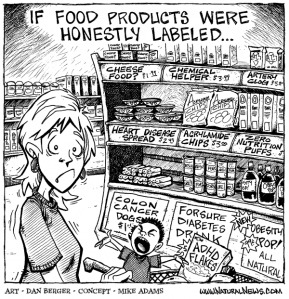
https://daniellekrupa.files.wordpress.com/2012/04/food-label-comic1.jpg
[1] Modic, Megan and John E. Schneider. “Nutrition Policy & Food Labeling in the U.S.: A Review & Update”. Avalon Health Economics, July 6, 2014. http://www.avalonecon.com/nutrition-policy-food-labeling-in-the-u-s-a-review-update-march-2014/.
[2] Ibid.
[3] Wheeler, Lydia. “Dems Offer Bill to Overhaul Food Labels”. The Hill, November 23, 2015. http://thehill.com/regulation/legislation/261101-dems-offer-bill-to-overhaul-food-labeling-regs.
[4] Ibid.
[5] Watson, Elaine. “Food Labeling Bill Proposes Radical Changes to 'Natural' Claims, Wholegrain labels, Added Sugars; But Chances of Success are Slim, say Lawyers”. Food Navigator USA, September 19, 2013. http://www.foodnavigator-usa.com/Regulation/Food-labeling-bill-proposes-radical-changes-to-natural-claims-wholegrain-labels-added-sugars-but-chances-of-success-are-slim-say-lawyers.
[6] “Legislation Introduced to Modernize Food Labeling”. Progressive Grocer, November 23, 2015. http://www.progressivegrocer.com/departments/pharmacy-wellness-bpc/legislation-introduced-modernize-food-labeling?nopaging=1.
0 notes
Text
The Beef Ban in India
Candice Diah

Indian Flag (Photo found at flaglane.com)
Growth and changes in Food laws are often dictated by cultural and societal views. In certain states in India, new developments in food law are falling in line with age-old Indian traditions. Last month, in compliance with a 150-year old law, the High Court of Jammu and Kashmir has decided to continue the ban on the sale and slaughter of cows and similar animals, as well as the possession of the flesh of such animals. Both are non-bailable offenses, punishable with 10, and 1-year sentences, respectively. This decision comes in light of a petition to raise the beef ban, and an increase in violations of the law within the Kashmir valley. Today, 24 of India’s 29 states hold similar bans on beef.
Historically, the slaughter of cows in India has been a controversial topic. Such practices are contrary to Hindu beliefs and the prohibition of slaughtering these animals is found in the Indian Constitution:
“The State shall endeavour to organise agriculture and animal husbandry on modern and scientific lines and shall, in particular, take steps for preserving and improving the breeds, and prohibiting the slaughter, of cows and calves and other milch and draught cattle.”
The Vedic Scriptures, which are the oldest scriptures of Hinduism, encourage vegetarianism and state, “abstention [from eating meat] brings great rewards”. The Slaughter of cows has been prohibited since ancient India, when cows were given to Brahmans (High priests) as gifts. From there came the idea that killing a cow was the equivalent of killing a Brahman. Today, dairy products are a staple in Indian diet, and are used in religious worship. Once per year, during Gopastami, cows are washed, decorated, and given offerings in temples across India.

Prayers offered to a sacred cow on Gopastami (photo found at dailymail.co.uk)
As Indian religion diversifies, so do the citizens’ beliefs surrounding cattle. Beliefs contrary to those shared by people of Hindu faith have led to a growing illegal beef market. Particularly, illegal trade has become a common practice between India and Bangladesh. Indians in border villages that are willing to smuggle beef out of the country and into neighboring Muslim majority countries can earn roughly between thirteen and forty-times the market value for this meat. This black market has created over 30,000 illegal distributors of beef in India. It has also led to the mass killings and injury of both Bangladesh citizens purchasing the beef and Indian Border Security officers attempting to prevent these transactions.
Proponents for the lifting of the beef ban in India argue that the beef ban is not worth the violence it causes. They argue that the only way to prevent this turmoil is to lift the ban, which would allow the government to regulate the treatment of animals and ensure that any slaughters that take place are done in the most humane way possible.
Contrary to this view the High Court of J&K decided the ban should not be lifted. The decision was made by a three member bench last month. The High Court has called on all senior superintendents and stationhouse officers within the state to crack down on the enforcement of these laws.
Economic arguments have also been made in opposition of the ban. Particularly, it is of concern that the ban places a heavy burden on farmers to maintain their cows, even after they no longer bear milk. Without a beef market, farmers must continue to feed and care for these animals, while getting no return on their investment. As a result, farmers often abandon older cows, leaving them to live on the streets, eating garbage.


Abandoned cows eating garbage (photo found at indiatvnews.com; urbanhikers.com )
The issue of whether or not beef should be banned in India has gained significant traction over the last several years. It’s been a popular issue, highlighted by several Bollywood celebrities. Film director, Krishna D.K. tweeted, "But for the record #BeefBan is still an infringement on freedom regardless of whether it affects you or not." Film director, Onir, tweeted, "Seems like the "democratic" constitution of India does not guarantee diversity . #BeefBan is a sad reflection of that". Actress, model and producer, Raveena Tandon, tweeted, "My only take on beef issue that it should not be enforced, it should be optional... To eat or not to eat, is a personal choice."
Evidently, several issues remain regarding the ban on the beef trade. Nonetheless, history, tradition, religion, and culture seem to be the driving forces behind the J&K High Court’s decision, and it is likely that many other states will follow suit if faced with similar petitions urging them to lift the bans.
0 notes
Text
Sexual Harassment in the Agriculture Industry
by Deborah Flores
The Agriculture work force has become one of the most controversial industries due tot he frequent sexual abuse and exploitation of women. Since the mid 1990’s there has been an influx of sexual harassment of female migrant workers in farm labor. Additionally, the agricultural industry has become one of the most prominent business for sex trafficking.
Sexual harassment of female workers in America’s fields and packinghouses became a huge concern in the mid-1990s. By that time, women were referring to the fields as “the fils de calzón” (‘fields of panties”) or “green motels.”
In 2012, Human Rights Watch (HRW) published a report titled “Cultivating Fear: The Vulnerability of Immigrant Farmworkers in the US to Sexual Violence and Sexual Harassment” (“the Report”) illustrating the dangers that female immigrant farmworkers face in the workplace. The Report explained “how hundreds of thousands of immigrant farmworker women and girls in the United face a high risk of sexual violence and sexual harassment in their workplaces because US authorities and employers fail to protect them adequately.”
In 2013, the Center for Investigative Reporting and the Investigative Reporting Program at the UC Berkeley Graduate School of Journalism concluded that an estimated 560,000 of women who work on U.S. farms are sexually harassed.

In February of this year, Newsweek published an article titled “Sex Slaves on the Farm” that addressed prostitution in the agriculture industry. The article talked about how women are being brought to the US in the false promise to work on a farm, but are instead trafficked as sex slaves.
According to the Homeland Security Investigations in New York, most of the women are brought from all over the world to metropolitan areas where they are transported during the day to farms. Although the exact number of women who are trapped in this city-to-farm sex pipeline is unknown, the U.S. Department of State estimates that traffickers bring some 14,500 to 17,500 people into the United States each year.

Why the agriculture industry?
Statistics have shown that sexual harassment is most likely to occur in male-dominated industry. One of the realities of farm work is that it’s mostly a field occupied by men. Additionally, according to the HRW report, at least 50% of immigrants in the agriculture work force are undocumented, and most women fear being deported if they complain.
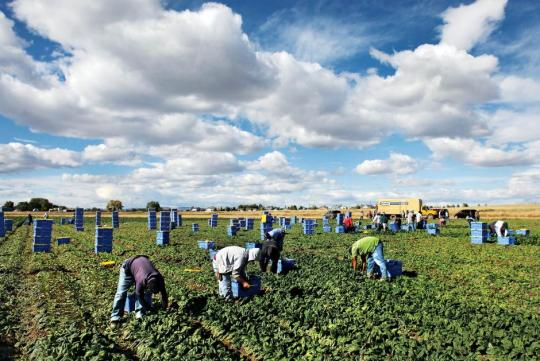
“Sexual violence doesn’t happen unless there’s an imbalance of power…[a]nd in the agricultural industry, the imbalance of power between perpetrator, company and the worker is probably at its greatest,” said William R. Tamayo, the regional attorney in San Francisco for the U.S. Equal Employment Opportunity Commission, which files sexual harassment lawsuits on behalf of employees, including farm and food factory workers.
Other workers fear the financial consequences of speaking out against their abusers. Females who complain can get blackballed and unable to get jobs at other farms. Additionally, supervisors threaten to fire their entire family in retaliation. Moreover, immigrant women face other barriers like lack of English language skills and trust in law enforcement.
Female workers are not the only ones being sexually assaulted, other immigrant women are being brought to the fields to work as sex slaves. Women and girls as young as 12 are brought into the United States and sent to farm labor camps where they are forced to have sex with strangers.

There are various reasons why prostitution in agriculture areas is a flourishing industry, some women go to farm labor camps or voluntarily sell sex out of financial necessity. However, what is happening currently is that traffickers are bringing women to farms as part of large international operations.
Treatment:
In the Report, as many as 52% female farmworkers said they, or someone they knew, had suffered sexual violence or harassment.
"Our research confirms what farmworker advocates across the country believe: Sexual violence and sexual harassment experienced by farmworkers is common enough that some farmworker women see these abuses as an unavoidable condition of agricultural work.”
The Report explained how supervisors are abusing female workers and how they are constantly groped, and touched inappropriately during working hours. “In one instance a woman in California said a supervisor at a lettuce company raped her and afterwards told her she should remember that it was because of him she had a job.”
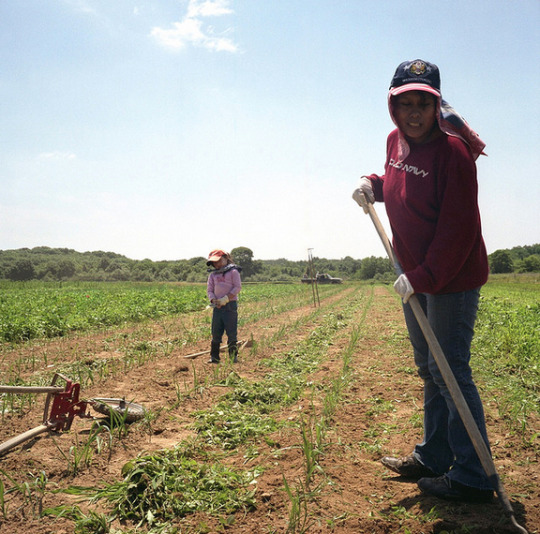
The Report mostly described situations where female workers were raped, stalked, subject to unwanted touching, exhibitionism, or vulgar and obscene language by supervisors, employers, and others in positions of power.
With regards to the prostitution side of female rape in the agricultural industry, women and girls are faced with mortal dangers because they are raped so roughly that some have died. In those cases, women have died because of the overwhelming clientele or the roughness of the sex, farm workers simply throw their bodies in a dump.
The Newsweek articled described the story of a woman named “Janet” that was brought to the US to supposedly work in a farm, but was instead sold into sex trafficking. The article details how Jane and other three women dressed in heels and shirt skirts, were brought to the beat-down shacks in North Carolina, were more than 100 farm workers lived, and told to lie on the floor while 50 men got in line to rape them for $30.
Remedies
What all women have in common is that a majority of them are undocumented and therefore face governmental barriers to report the crimes and abuses. In October 2000, Congress passed the Victims of Trafficking and Violence Protection Act (VTVPA) that created the “T” visa for victims of trafficking. However, females who are trafficked are mostly smuggled so there aren’t many protections unless the sex trafficking ring is caught.
With regards to female migrant workers, even though there is not a specific law that protects female workers nation-wide, some states with an abundance of farm labor have taken matters into their own hands. In September 2014, the governor of California passed a bill that requires sexual harassment training for labor contractors, supervisors and all farm employees. The law was passed after an investigation found “widespread sexual abuse of the immigrant women who pick, pack and process America’s food.”

Some women are taking to the court system. Frontline reported that at least 41 cases of sexual harassment lawsuit have been filed since 1998. In 2011 a worker at a tree farm “accused her supervisor of repeatedly raping her over the course of several months in 2006 and 2007, often holding gardening shears to her throat. If she complained to anyone, he allegedly told her, he would fire her and kill her entire family.” Although no criminal charges were brought against the supervisor, a civil case was brought against the tree farm that settled for $150,000.
In 2013, a woman working in a hen-laying house brought suit against her manager claiming he forced her to “routinely give him oral sex to keep her job.” The case was settled for $650,000 and the manager no longer works at the farm.
Most recently, in September 15, 2015, five migrant women that worked at a Florida packing plant were awarded $17.4 million because they were raped and sexually harassed by three male supervisors. The complaint in the case explained how the women were groped and propositioned by three male supervisors that threatened them with termination if they opposed their sexual advances.
Additionally, Melissa Barrios, director of the EEOC's Fresno Local Office, added, "Workers who report sexual harassment in the workplace - even if they were not the direct victims - are protected from retaliation under the laws enforced by the EEOC. Employers cannot fire workers who exercise their federal right to report harassment in the workplace."
References:
1. http://www.pbs.org/wgbh/frontline/article/female-workers-face-rape-harassment-in-u-s-agriculture-industry/
2. http://www.newsweek.com/2015/02/13/sex-slaves-farm-304354.html
3. https://www1.umn.edu/humanrts/svaw/harassment/explore/3causes.htm
4. http://www.huffingtonpost.com/2012/05/16/female-farmworkers-abuse-report_n_1519972.html
5. http://www.reuters.com/article/2012/05/16/usa-rights-farmworkers-idUSL1E8GG8A020120516#OxwJLigHT3LEHWwS.97
6. http://www.uscis.gov/humanitarian/victims-human-trafficking-other-crimes/victims-human-trafficking-t-nonimmigrant-status
7. http://www.pbs.org/wgbh/frontline/article/female-farm-workers-awarded-17-million-in-florida-abuse-case/
8. https://www.revealnews.org/article-legacy/brown-signs-bill-to-help-protect-female-farmworkers-from-sex-abuse/
9. http://www1.eeoc.gov/eeoc/newsroom/release/6-24-15c.cfm
10. https://publichealthwatch.wordpress.com/2015/09/11/u-s-jury-awards-17-million-to-victimized-female-migrant-workers/
Pictures
1.(picture taken from: http://www.huffingtonpost.com/entry/migrant-workers-rape-lawsuit-eeoc_55f1ee88e4b093be51be3ceb)
2. (picture taken from: http://www.newsweek.com/2015/02/13/sex-slaves-farm-304354.html)
3. (picture taken from: http://www.newsweek.com/2015/02/13/sex-slaves-farm-304354.html)
4. (picture taken from: http://www.newsweek.com/2015/02/13/sex-slaves-farm-304354.html)
5. (picture taken from: http://hrbrief.org/2013/02/female-migrant-farmworkers-are-often-targets-of-sexual-violence-and-harassment-2/)
7. (picture taken from: http://ktla.com/2014/02/27/gov-jerry-brown-announces-reelection-bid/)
0 notes
Text
What Does It Mean To Be “Natural”?
By: Philip Boyers
While out shopping, you have undoubtedly come across an item claiming to be "all natural". Seeing this, you probably think that it is therefore a healthy product. You might be willing to pay a little extra for it because of this, or might get it assuming it is a safer option then a similar product that is not "all natural". But what does this claim actually mean? Does everything in the product have to have come directly from nature? Can ingredients which normally come from nature be manmade instead? What about the process used to make the product, does that also have to be "all natural"? Are all of the ingredients themselves "all natural"? These are all important questions, but under current FDA standards, many of them go unanswered.
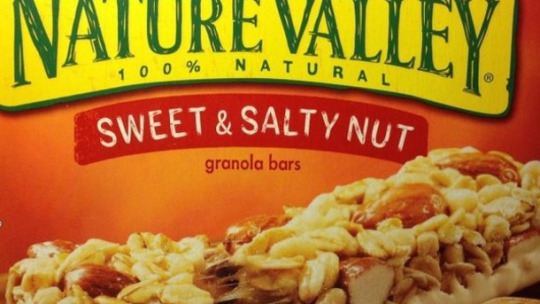
From: http://www.foodnavigator-usa.com/
The Food and Drug Administration (FDA) is responsible for a great deal of food labeling regulations. Its current definition for what is "natural" is sorely lacking though. The FDA stated that the word "natural" is often used to convey that a food is made entirely of not manmade substances.[1] Additionally, it considers "natural" to mean that nothing artificial or synthetic has been added to the product that would not normally be expected to be there.[2] This leaves a wide range of possibilities open though, as it does not address many of the questions above. Can a cow be raised on growth hormones and still be in an "all natural" hamburger? Do manufacturing methods such as pasteurization or irradiation affect the "all natural" status of the product? There is a great deal of ambiguity with the term, and this leaves shoppers uncertain as to what the claim is and what they are actually buying. To help solve this issue, the FDA has issued a notification of request for comments.
A request for comments is a system that government agencies can use to gather a better understanding of an issue or topic from the public itself. It allows any interested party to submit information and comments to a specific docket for review by the agency. The FDA has created a docket for information and comment on use of the term "natural" in labeling food products to help solve many of the questions as to what the term means. With the input they receive, the FDA is hoping to be able to make a clearer definition of "natural", and end much of the confusion for what went in to making your food.
This request for comments may seem overdue to some, and out of the blue to others. It is happening now due to a confluence of outside pressure. There have been multiple petitions to the FDA for a definition of "natural" on food labeling recently, submitted by citizens and garnering enough support to warrant attention.[3] In addition, there have been federal courts which have requested a administrative action on this matter, due to complications in litigation without a solid definition.[4] With citizens groups and the federal courts asking for clarification, the FDA has finally begun action towards elucidating this murky "all natural" area.
Any decision by the FDA on this matter will affect a large number of individuals, as well as companies and manufacturers, and possibly farmers and cattle ranchers. The most obvious group to be affected will be the individual consumer. People looking to buy "all natural" products are invested in knowing what that means, and how it translates to their food. If a more strict definition goes into effect, then consumers looking for these products may have to pay more than they previously did, though with a trade of actually knowing what they are buying. If no action is taken then they must continue down this path in the dark as to what their food might contain and how it was produced.
Food manufacturers and advertisers will also be affected. If new guidelines come out for what constitutes "natural" then they will have to either alter their production to meet the new standards, or abandon their current advertising. This is clearly a decision which will cost the company money, as there will likely be a loss of sales if the advertising of "all natural" goes away, while shifting how production is done would also entail possibly substantial costs. Many of these groups would like the current system to remain in place, as it allows them to advertise "all natural", without really having to do much, as it is so vague and can mean a variety of things.
Another set of interested groups are supermarkets, stores, and even farmers markets. Places that sell food might have to shift their purchase numbers and types depending on new manufacturer requirements. It would also likely add to the number of stock items they shelve, as there would be regular and "all natural" versions of many products. Farmers markets could also see change depending on how all encompassing the regulation is. Sellers may be required to adjust how they show what they are selling. Additionally, their sales might be reduced if those who would normally go to a farmers market for the peace of mind in knowing what they are getting could instead just go to a nearby supermarket and get that same peace of mind.
Finally, cattle ranchers and farmers on a large scale may have be affected. If new regulations require that every ingredient into the final product must be entirely non-manmade or modified, then it may alter what kind of cattle and crops may be used. If pesticides are banned from crops going to "all natural" products farmers may have change their methods to meet this new requirement. The same is true for cattle farmers if growth hormones or animal antibiotics are disallowed in "natural" foods. These groups may have to choose between growing for "natural" products, and growing for the larger manmade market.
While the FDA is making an effort with this request for comments, it is important to note that no decision has yet been made. There are a great many interested in this, and so it will undoubtedly take some time for the FDA to parse through all of the material and make any kind of decision. Still, this is an important step towards fixing the problem. Ambiguity is always a problem when it comes to rules and law. People want a clear list of what is right and wrong, and want to know what these regulations mean for them. It would also help put to rest worries about the “natural” label being on foods most would immediately disbelieve.
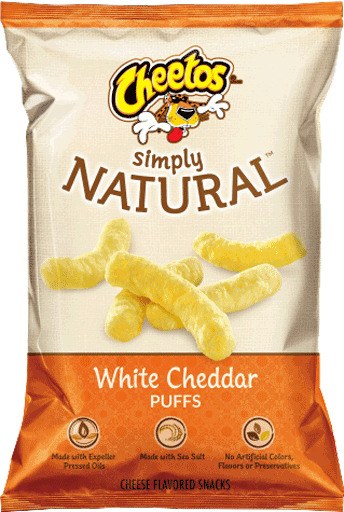
From: www.Fritolay.com
With how pervasive the term "natural" has become in the advertising and food labeling market, there needs to be some kind of cohesive definition for what it means. It is important to remember that various groups will be possibly affected adversely, whatever the FDA decides, but that is still a superior option to the current system, where even the courts are sometimes unclear how to rule in private litigation. With all the potential data and ideas out there, it is nearly impossible to suggest a final answer as of yet, but with this FDA docket, a reasonable solution should come through. The FDA will continue to collect comments until February 10, 2016, so anyone can continue to comment here:
http://www.regulations.gov/#!submitComment;D=FDA-2014-N-1207-0001
[1] 56 FR 60421, November 27, 1991.
[2] 56 FR 60421 at 60466.
[3] 21 C.F.R. part 101, http://www.regulations.gov/#!documentDetail;D=FDA-2014-N-1207-0001
[4] Id
0 notes
Text
FDA Seeks Public Comment to Define “Natural”
Since the early 1990s “Natural” has become one of the most popular food labels because the FDA has allowed for it to be used with minimal standards and no verification. In 1991 FDA stated that “natural” is often used to convey that a food is composed only of substances that are not manmade and is therefore more wholesome.[1] FDA only restricted the use of the term for foods that contain added color, synthetic substances, and flavors.[2] Thus a “natural” food item would consist of nothing artificial or synthetic added to the product that is not normally expected to be there. [3] The FDA then sought to establish a definition for the term because it was used on a variety of products with varying meanings. Providing producers and consumers with a definition for “natural” would remove some ambiguity regarding the use of it in labeling.[4] However, by 1993 the public comments offered FDA was nothing that it considered a satisfactory definition for the term so the agency declined to engage in a rulemaking process to offer a definition.[5] The policy established in 1991 restricting the use of “natural” only for products containing added color, synthetic substances, and flavors has stood FDA’s only regulatory definition for “natural” since. USDA’s FSIS offers a definition for the term “natural” in regard to meat products: (1) the product cannot contain artificial flavor, coloring ingredient, chemical preservative, or any other artificial or synthetic ingredient and (2) the product and its ingredients are not more than minimally processed.[6] These vague definitions of the term “natural” have led to the FDA establishing a docket to receive public comments on the use of the term in labeling of human food. Recently multiple entities requested that the FDA more clearly define or abolish the term “natural” through citizen’s petitions that led to the public comment docket being established.
The Grocery Manufacturers Association submitted a petition requesting that FDA, “issue a regulation authorizing statements such as ‘natural’ on foods that are or contain foods derived from biotechnology.”[7] (GMA Petition). The GMA argument is that FDA has recognized genetically modified foods as safe for years but the current standard for “natural” is unclear as to whether these products would be allowed to be designated “natural.”[8] This petition calls for FDA to undergo notice and comment rulemaking to define the term “natural” and for the definition to be a favorable one for genetically modified foods in regard to being labeled as “natural.”[9]
The Sara Lee Corporation submitted a petition requesting that the FDA adopt requirements for use of the term “natural” consistent with the definition provided by FSIS.[10] (Sara Lee petition). Sara Lee calls for a definition that “would provide consistency for consumers and food manufacturers over the large variety of foods that bear a ‘natural’ claim.” [11] Sara Lee Corp. requests a definition that provides a flexible policy that provides for case-by-case consideration that prohibits the use of the term when it is used in a false or misleading way. However Sara Lee does not favor notice and comment rulemaking for creating a definition of “natural” because that would create a rigid definition of the term but they claim there is no one-size-fits-all definition given the many contexts the term is used for in different food products. Sara Lee instead favors a collaborative definition between FDA and USDA’s FSIS to create a uniform “natural” policy. They claim that uniformity would create consistency throughout the marketplace given that FDA and USDA both regulate different aspects of the food process.[12]
The Consumer Reports Food Safety and Sustainability Center submitted a petition to FDA requesting the prohibition of the “natural” label on foods.[13] This petition was based on the notion that consumers were being misled by the label because there is no formal definition and no rule regarding the term. They believe that there is a drastic difference between the policy statement of the definition in 1991 and what people actually think “natural” should mean. Consumer Reports conducted a survey that showed that, “Sixty six percent of consumers think “natural” processed food products mean no toxic pesticides were used, 66% think no artificial ingredients or colors were used, 65% think no chemicals were used during processing and 64% think no GMOs were used.”[14] They claim that the American people believe the “natural” label should mean that no artificial substances or GMOs were used in production or processing of foods, and that no antibiotics, growth hormones, or artificial feed ingredients were used in animal agriculture.[15] Because of this discrepancy Consumer Reports believes banning the use of the “natural” label would entirely remove the ambiguity of the term.
The FDA has established a docket for public comment on the definition of “natural” because these citizen petitions undoubtedly represent only a fraction of possible definitions. The potential impact of this definition is wide-ranging. Farmers and food manufacturers may have to change their practices to conform to a new standard. Foods that have been labeled as natural since 1991 may no longer qualify, leaving producers with no option but to change their product or label to comply. Business will be forced to decide how vital that natural label is their product. Farmers could be faced with planting non-GMO seeds to meet natural standards if they are deemed as not natural. However a clear definition of the term natural could provide clarity to consumers about the production of the foods they purchase and what has or has not been added to them.
Sources:
[1] - http://www.regulations.gov/#!documentDetail;D=FDA-2014-N-1207-0001
[2] - 21 CFR 101.22 https://www.accessdata.fda.gov/scripts/cdrh/cfdocs/cfcfr/cfrsearch.cfm?fr=101.22
[3] - Id.
[4] - http://www.regulations.gov/#!documentDetail;D=FDA-2014-N-1207-0001
[5] - Id.
[6] - FSIS Food Standards and Labeling Policy Book http://www.fsis.usda.gov/OPPDE/larc/Policies/Labeling_Policy_Book_082005.pdf
[7] Citizen Petition From Grocery Manufacturers Association https://www.consumerproductmatters.com/wp-content/uploads/sites/13/2015/11/Citizen_Petition_From_Grocery_Manufacturers_Association.pdf
[8] - Id.
[9] - Id.
[10] - Citizen Petition from Sara Lee Corp. http://www.fda.gov/ohrms/dockets/dockets/07p0147/07p-0147-cp00001-02-vol1.pdf
[11] - Id.
[12] - Id.
[13] - Citizen Petition from Consumers Union - http://www.regulations.gov/#!documentDetail;D=FDA-2014-P-1650-0001
[14] - Id.
[15] - Id.
0 notes
Text
“Healthy Happy Meals”, is it a real possibility?
Last year a member of the New York City Council proposed the “Healthy Happy Meals” bill, which is targeted to counteract childhood obesity by taking direct aim at McDonald’s Corp. and other fast-food chains. As it stands right now as long as the ingredient used in the meals satisfy the FDA and USDA requirements fast food restaurants are able to sell as-is to the public. This bill would require fast-food meals marketed to children to comply with several nutritional guidelines including; serving a vegetable or fruit as a side, no more than 35% of the meals calories coming from fat, must contain fewer than 10% of calories from saturated fat or added sugars and can have no more than 600 milligrams of sodium.
After learning of this proposal a team of researchers from New York decided to determine what type of affect this bill would have on childhood obesity. These researchers analyzed 358 purchases made at fast-food restaurants. Of these 358 purchases, 422 of the meals included children’s meals and of these 422 children’s meals 98% of the meals did not meet the bills proposed dietary guidelines. Had those meals complied with the bill’s proposed guidelines, there would have been a 9% drop in calories in addition to a 10% drop in both sodium consumption and calories from fat.
These result may seem minimal, but it is a much needed start in the right direction. Since 1985, obesity has more than doubled in children, thereby resulting in the increase in several long term health conditions including: diabetes, heart disease, stroke, gall bladder disease, fatty liver, arthritis and joint disorders and some cancers. At least one actor contributing to the spike in obesity rates is the fast food industry. With Americans spending over 164 billion dollars at fast food restaurants in 2014.
However, this is not the first time a bill such as this has been proposed. In 2010, Santa Clara County implemented a law prohibiting restaurants from distributing toys with meals unless those meals met certain nutritional guidelines. Soon after the bill was implemented a study was performed to determine the bills effectiveness. The study determined that fast-food restaurants were circumventing this law by charging 10 cents to purchase a toy with your happy meal (which goes to the Ronald McDonald house). This circumvention resulted in fast-food restaurants being able to sell kids meals which failed to meet dietary guidelines, thereby, preventing the bill from being effective. Another major obstacle that this bill faces is individual’s free-will to choose what they want to eat. So long as parents are able to purchase adult meals for their children, the bill’s chances of being successful is reduced drastically.
Even though I agree the bill has good intentions, how it is presently written will cause it to be unsuccessful. As demonstrated in Santa Clara, and other cities which have enacted a similar bill, fast-food chains are very efficient in finding loopholes in the law. Additionally, this law will face similar problems as school lunch policy which mandate healthy sides. As school cafeterias have figured out and proponents of this bill will figure out no matter how pure your intentions are, you cannot force kids to eat healthy if they do not want to. Lastly, this bill fails to consider the effect it will have on happy meals profit margins. The decrease in the profit margin will cause fast-food chains to increase the price of their happy meals therefore, reducing the price difference between happy meals and adult meals. With price differences decreasing, with respect to happy meals and adult meals, families will choose to purchase the adults meals which offer larger quantity of food, resulting in a non-effective bill.
If the legislatures want to force fast food chains to become healthier they should make it mandatory that fruits, vegetables, or wheat bread are offered as sides for all meals. This would enable adults to choose a healthy sides, which would set a good example for their children (young kid always want to be like their parents), thereby leading to more children ordering healthy sides on their own. Additionally, there would be no loop-poles for fast-food restaurants to take advantage of. This type of strategy has already been implemented by Subway (Subway offers healthy foods such as apples and yogurt as a side), and as of 2015, Subway was named the most successful fast food restaurant in the United States.
Even though this bill probably won’t have a significant effect on childhood obesity, it is a step in the right direction and hopefully will be a catalyst for the implementation of more bills aimed at fighting childhood obesity.
cites:
Arlene Weintraub, Will Mandating Healthy Happy Meals’ Solve Childhood Obesity, (Aug. 1, 2015, 11:00 AM), http://www.forbes.com/sites/arleneweintraub/2015/08/31/report-will-mandating-healthy-happy-meals-solve-childhood-obesity/
Id.
Darlene Tverdohleb, Regulations Will Make Fast Food Meals For Kids Healthier,(Sept.3, 2015, 7:07 PM), http://www.sciencetimes.com/articles/7239/20150903/regulations-will-make-fast-food-meals-for-kids-healthier.htm
Id.
Id.
Dr. Ananya Mandal, MD. Obesity and Fast food (November 19, 2005), http://www.news-medical.net/health/Obesity-and-Fast-Food.aspx
Id.
Id.
Id.
Id.
9 Most Successful fast-Food Chains( Dec. 11, 2014) http://money.howstuffworks.com/9-most-successful-fast-food-chains.htm#page=10
0 notes
Text
The Raisin Case: Is this the Death of Federal Regulation of Agricultural Commodity Markets?

Image Credit: Raisin Administrative Committee
By: Adrian Cole
We generally accept the government has the right to regulate the agricultural commodity markets. The regulation of the market to protect both growers as well as consumers is long settled as a matter of law; the Supreme Court of the United States upheld the government’s ability to regulate the market for crops in 1942 with its decision in Wickard v. Fillburn (opinion available here). The question seemed long settled until this year. In June, the Supreme Court ruled in Horne v. Dep’t of Agriculture (opinion available here) that a regulatory program seemingly similar to the one in Wickard was unconstitutional.[i] While the holding in Horne is significant for a number of reasons, many beyond the scope of this blog, the government’s right to regulate crop markets is intact.
The Background of the Cases
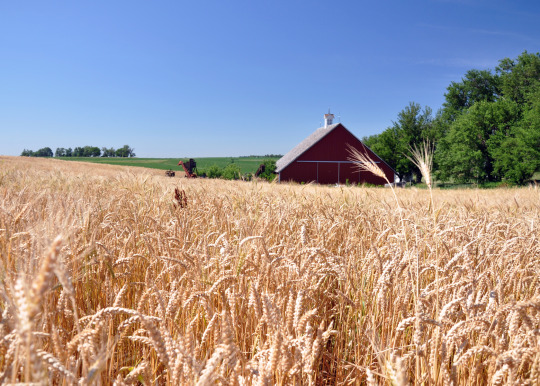
Image Credit: United States Department of Agriculture
In Wickard, the government had instituted a compulsory program to regulate the amount of wheat allowed to be produced. The government gave allowances to states who then divided the allowance to counties who set limits for individual farmers. Before the limit became effective, a nationwide vote of wheat farmers in the country had shown that over two-thirds of the farmers voting were in favor of the limit. Mr. Filburn normally grew a small amount of winter wheat, which was primarily used to feed his animals and family. In 1940, the government had given his farm an allotment of 11.1 acres of wheat. He grew more than double that amount, and he refused to either store the wheat or deliver it to the government to avoid a penalty. He was fined for his excess production, and he refused to pay the fine and instead brought suit.[ii]

Image Credit: Raisin Administrative Committee
In Horne, the government had instituted a program limiting the amount of raisins that could be introduced into the domestic market. The program required raisin handlers to set aside the portion of raisins above the amount allowed to be sold domestically for the government to collect in years with excess production. The government took those excess raisins and sold them in non-competitive markets to exporters, federal agencies, and foreign government. The grower was entitled to any proceeds left after the government covered its cost. In 2003 and 2004, raisins had a bumper crop, and the government ordered the Hornes to turn over 47% and 30% respectively in those years. In 2004, the Hornes refused to set aside any raisins. The government fined them the fair market value of the raisins in excess of what was allowed to be sold plus an additional $200,000 as a civil penalty. They refused to pay the fine and instead brought suit.[iii]
What’s the difference?
The cases have a lot of similarities. Both programs regulated the market to support prices, and both programs fined growers who did not comply. While at first it seems that the cases are equivalent, there was one crucial difference to the court. The Supreme Court chose in to focus on the fact that the marketing program for raisins required the physical turnover of excess amounts of raisins to the government. The court held that the ordered taking of the raisins to prevent them from entering the domestic market was unconstitutional. The court held that the physical taking of the raisins violated the Fifth Amendment’s requirement that “private property be taken for public use without just compensation.” While both the wheat program and the raisin program had similar results for growers, the court held that the actual taking of the raisins was beyond the scope of the government’s powers.[iv]

Image Credit: Raisin Administrative Committee
Additionally, the court also narrowly held that the mere increased price of raisins as a result of the program was not sufficient compensation.[v] In reality, the price of raisins was supported by multiple factors. First, the limitation on the amounts that can be introduced in the domestic market meant that there was a higher price due to limited quantity and less competition as other growers complied with the regulation. Indeed, the Hornes even purchased other growers’ raisins to sell and refused to turn over any portion of those raisins as well. The Raisin Administrative Committee is itself made up of members who produce and handle raisins in the domestic market[vi] The committee is not only allowed to regulate the introduction of raisins into the domestic market, but it also has antitrust exemptions to allow it to do so.[vii] The price which the raisins that were allowed to be sold received was increased not only by the limitation of competition but also by the fact that those in the raisin industry are essentially allowed to collude to help maintain a higher price. Still the court held that increased price for raisins that could be legally sold was not alone sufficient compensation at least in the context of such a large amount being taken.[viii]
So What Does this Mean?
The Raisin Administrative Committee has not felt the need to limit the amounts allowed in the domestic market since 2012.[ix] The committee did not even feel the need to issue a press release after the Horne decision.[x] While the decision is significant due to its requirement of compensation if the government takes possession of a crop, it is not the end of the government’s ability to regulate the agricultural commodity markets. Even as the court focused on the means used to achieve the government’s focus, it was noted that even the Hornes themselves conceded the government could regulate the market to achieve its purpose.[xi] The decision will require some changes to certain federal programs, but the government can still achieve its goals. For instance, the government can still prevent raisins in excess of a limit from being sold in the domestic market via regulation. The government can fine a grower the value of any excess raisins sold plus a penalty instead of taking possession of the raisins themselves. While changes may have to be made, we can all still expect stable agricultural commodity markets.
[i] Horne v. Dep't of Agric., 135 S.Ct. 2419 (2015).
[ii] Wickard v. Filburn, 317 U.S. 111, 113-15, 63 S.Ct. 82, 84-85 (1942).
[iii] Horne, 135 S.Ct at 2421-22.
[iv] Id. at 2427-28.
[v] Id. at 2432-33.
[vi] United States Dep’t of Agric., Federal Raisin Marketing Order Part 989 Raisins Produced from Grapes Grown in California, 7 available at http://raisins.org/images/part_989.pdf.
[vii] Id. at 70.
[viii] Horne, 135 S.Ct. at 2421-22.
[ix] Raisin Administrative Committee, Marketing Policy and Industry Statistics 2014, 1 (2014) available at http://raisins.org/images/Marketing%20Policy%202014a.pdf.
[x] See http://raisins.org/index.php/news/press-releases.
[xi] Horne, 135 S.Ct. at 2428.
0 notes
Text
Sad Day for Bacon Lovers: IARC Links Processed and Red Meat to Cancer
By: Meredith FitzGibbon
In October 2015, the International Agency for Research on Cancer (IARC), a functionally independent cancer agency under the umbrella of the World Health Organization (WHO), issued a report stating that red meat “probably” increases the risk of colorectal cancer and that processed meat does raise the risk of colorectal cancer. [1] IARC also reported finding an inconclusive link between eating processed meat and stomach cancer. [2]
According to IARC, “red meat refers to all mammalian muscle meat, including, beef, veal, pork, lamb, mutton, horse, and goat.” [5] Processed meat is “meat that has been transformed through salting, curing, fermentation, smoking, or other processes to enhance flavour or improve preservation.” [6] Common everyday foods such as bacon, sausage, hot dogs, deli meat, and chicken nuggets are considered processed meats. [7]
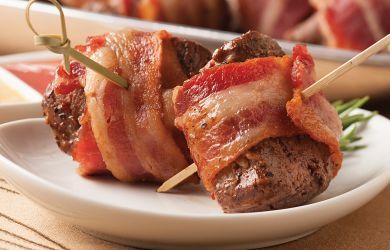
(Image Source: http://www.omahasteaks.com/recipe/bacon-wrapped-tenderloin-tip-app)
Essentially, IARC’s study revealed that red and processed meats are carcinogenic to humans which make the consumption of these foods increase the risk of cancer. [8] IARC classified red meat and processed meat into express groups which denote their carcinogenic nature and thus associated risk of cancer.
Processed meat was classified as “carcinogenic to humans.” [9] For processed meat, there was sufficient evidence from the epidemiological studies to show that processed meat causes colorectal cancer. [10] Interestingly, both cigarettes and asbestos are also classified as “carcinogenic to humans.” [11] Despite being in bad company, the WHO assures that processed meat is not as equally dangerous as cigarettes and asbestos because the IRAC classifications denotes strength of the scientific evidence that an agent can cause cancer, not the agent’s level risk or danger. [12] Many may still find this fact unsettling.
To make this more comprehendible, IARC essentially found that eating 50 grams of processed meat, which is same as four strips of bacon or a hot dog, increases the risk of colorectal cancer by 18%. [13] The American Cancer society reports that “the lifetime risk of someone developing colon cancer is 5%. [14] To put the [IARC numbers] into perspective, the increased risk from eating the amount of processed meat in the study would raise average lifetime risk to almost 6%.” [15] Therefore, the increased risk of cancer is not that great; however, the more processed meat one consumes the more their risk of colorectal cancer increases. With that, as with all things the key is moderation.
Red meat was classified as “probably carcinogenic to humans.” [16] The epidemiological studies revealed a positive association between eating red meat and developing colorectal cancer; however there is not sufficient evidence to know exactly how much eating red meat increases the risk of cancer. [17] IARC reported that if the causal link is established, then the data suggests that eating red meat increases the risk of colorectal cancer by 17% for every 100 gram portion of red meat eaten daily. [18] One hundred grams is the equivalent of a 3.5 ounce serving of red meat.
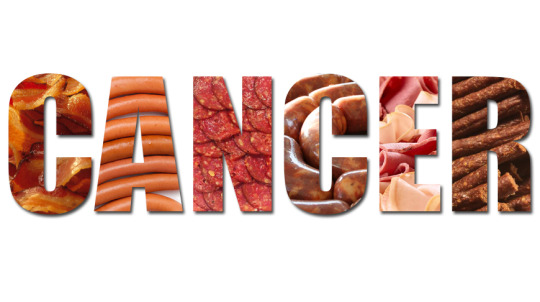
(Image Source: http://www.hartfamilychiro.com/processed-meats-may-affect-male-fertility/)
IARC’s announcement came as no surprise to many people, including nutritionists and dietitians, who have consistently urged people to limit their intake of processed meat and red meat for years not only to limit their risk of cancer but also to stay heart healthy. [19] However, the news may be a hard pill to swallow for some average Americans. Some groups are now calling for a warning label on meat. [20] As expected, the meat industry reacted to IARC’s report with resistance. [21]
While the IARC itself does not make health recommendations, the WHO and national governments use IARC’s reports when drafting international and national health policies to help reduce the rick of cancer. IARC’s report on the carcinogenic nature of processed meat and red meat has already impacted and will continue to impact several United States food laws and policies.
Later this year, the USDA will release the 2015 Dietary Guidelines. [22] In making its report, the Dietary Guidelines Advisory Committee considers reports from the WHO. [23] The Scientific Report of the 2015 Dietary Guidelines Advisory Committee includes a recommendation to “lower consumption of red and processed meat.” [24]
The USDA needs to use the 2015 Dietary Guidelines to make an impactful change that educates Americans about the health risks, no matter how small, of eating processed meat and red meat. While I do not think people should have to cut processed meat and red meat completely out of their diets, it is important for Americans to understand the health risks associated with the things they eat. Currently, Americans eat a lot of processed meat without thinking twice. The portions are also too large to maintain a healthy diet. New dietary guidelines could help change consumer behavior over time.
If the recommendation to eat less processed and red meat is seriously included in the 2015 Dietary guidelines, it will impact several federal program such as the School Lunch Program. Under the 2015 Dietary Guidelines, the School Lunch Program will likely not allow schools to serve as much processed meat and red meat. With less red meat, specifically beef, being served at school lunches, the price of feeding our children at school will likely increase because beef is currently so heavily subsidized making it artificially cheap to serve. There cost of providing “healthy” options. School lunch programs will need to create innovative ways to feed our children with less school lunch favorites such as deli meat and chicken nuggets.
In all, it is important to remember that everything is okay in moderation. Although no one is being asked to stop eating bacon or steak and the assocated cancer risk is reltivly small, IARC’s report will impact future regulations and guidelines in that they will strongly consider the risks associated with these food. The way Americans eat will be impacted for better or for worse.
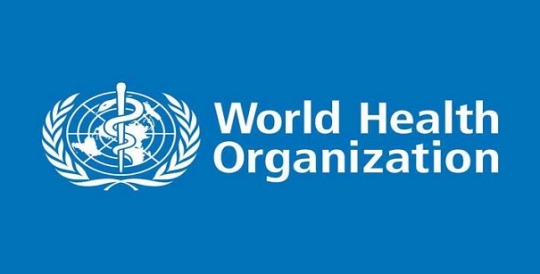
(Image Source: http://www.trainingsnews.com/iarc-postdoctoral-fellowships-for-training-in-cancer-research-france/)
[1] Links Between Processed Meat and Colorectal Cancer, WORLD HEALTH ORGANIZATION (Oct. 26, 2015), http://www.who.int/mediacentre/news/statements/2015/processed-meat-cancer/en/.
[2] Id.
[3] Q&A on the carcinogenicity of the consumption of red meat and processed meat, WORLD HEALTH ORGANIZATION, (October 2015) http://www.who.int/features/qa/cancer-red-meat/en/. [4] Id.
[5] Id.
[6] Id.
[7] What you need to do to reduce your risk of cancer from processed meat, FOX 2 NOW ST. LOUIS, (Nov. 12, 2015, 9:15 AM), http://fox2now.com/2015/11/12/what-you-need-to-do-to-reduce-your-risk-of-cancer-from-processed-meat/.
[8] Q&A on the carcinogenicity of the consumption of red meat and processed meat, supra note 3.
[9] Q&A on the carcinogenicity of the consumption of red meat and processed meat, supra note 3.
[10] Q&A on the carcinogenicity of the consumption of red meat and processed meat, supra note 3.
[11] Q&A on the carcinogenicity of the consumption of red meat and processed meat, supra note 3.
[12] Q&A on the carcinogenicity of the consumption of red meat and processed meat, supra note 3.
[13] Stacy Simon, World Health Organization Says Processed Meat Causes Cancer, AMERICAN CANCER SOCIETY (October 26, 2015), http://www.cancer.org/cancer/news/news/world-health-organization-says-processed-meat-causes-cancer.
[14] Id.
[15] Id.
[16] Q&A on the carcinogenicity of the consumption of red meat and processed meat, supra note 3.
[17] Q&A on the carcinogenicity of the consumption of red meat and processed meat, supra note 3.
[18] Q&A on the carcinogenicity of the consumption of red meat and processed meat, supra note 3.
[19] What you need to do to reduce your risk of cancer from processed meat, supra note 7.
[20] Anahad O’Connor, Meat Is Linked to Higher Cancer Risk, W.H.O. Report Finds, THE NEW YORK TIMES, (Oct. 26, 2015), http://www.nytimes.com/2015/10/27/health/report-links-some-types-of-cancer-with-processed-or-red-meat.html?_r=1.
[21] Id.
[22] 2015 Dietary Guidelines, HEALTH.GOV, http://health.gov/dietaryguidelines/2015/ (last visited Nov. 14, 2015).
[23] Questions and Answer, HEALTH.GOV, http://health.gov/dietaryguidelines/2015/qanda.asp (last visited Nov. 14, 2015).
[24] Scientific Report of the 2015 Dietary Guidelines Advisory, HEALTH.GOV Committeehttp://health.gov/dietaryguidelines/2015-scientific-report/07-chapter-2/d2-6.asp (last visited Nov. 14, 2015).
0 notes
Text
Montana’s New Cottage Food Law Expands Possibilities for Food Entrepreneurs
By Evelyn Norton

(image source: https://www.finedininglovers.com/blog/food-drinks/homemade-jam-recipes/)
Earlier this month, Montana’s revised cottage food law finally went into effect,[1] marking what cottage food communities are calling “a major leap forward” in cottage food law.[2] Specifically, the law expands the types of homemade items any person may cook or bake at home and then sell to the public.[3] Indeed, Montana Department of Public Health and Human Services guidance documents provide an extensive list of cottage foods approved for sale, including but not limited to:[4]
Baked goods
Dried fruits
Jams, jellies, preserves, and fruit butter
Dry herbs, seasonings, or mixtures (dry soup, teas, coffees, spice seasonings)
Popcorn, popcorn balls, or cotton candy
Fudge, candies or confections that require a cook step and do not require refrigeration
Molded chocolate using commercial chocolate melts
Honey
Plus, the Department may approve other products for sale on a case by case basis.[5]
Politicians hope that expanding the different types of home-based items permitted for sale under the new law will provide an economic boost to the state.[6] Sponsor of the revision, State Representative Kathleen Williams,[7] stated that “[w]hen California passed [California’s cottage food law], they created a thousand jobs out of it, so it’s just really pro-business, pro-producers, pro-nutrition.”[8] As Williams aptly concluded, “it will diversify the type of food products that are available to consumers . . . [and] will allow people to work from home that don’t have that opportunity before this law went into effect.”[9]
Under Montana’s new law, persons interested in selling one of the many approved home-based products need only to register with the local health authority.[10] Following registration, each seller must pay a modest $40 fee.[11] Then, after meeting these bare-bones requirements, home-based products may be sold without the imposition of a total sales cap.[12]
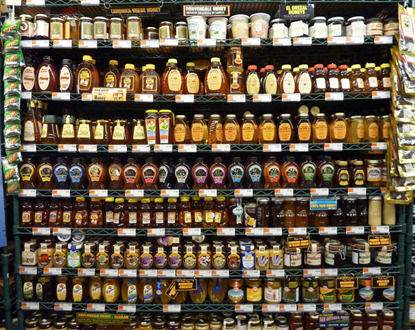
(image source: http://cdn.honeytraveler.com/wp-content/uploads/2010/10/FairWayShelf12.jpg?9deb11)
Many other states also permit the sale of cottage foods in at least some form.[13] As aforementioned, California created a legal avenue for food entrepreneurs to sell home-based products before Montana.[14] The California Homemade Food Act, which became effective January 1, 2013,[15] gave many people a chance to sell their products and generate revenue even though they did not have a full business in operation yet.[16] Like present-day politicians in Montana, politicians in California saw an opportunity for growth during the economic downturn. As Mike Gatto, California Assemblyman and drafter of the bill that eventually became California law, observed, “[w]ith the economy the way it is, people have more time to do things like [cook or bake] and could really use the extra cash.”[17] And, “[f]ood production, or the food business in general, have been pretty good gateways, especially with women, to enter the business world.”[18]

(image source: http://www.simplyscratch.com/2012/10/classic-red-velvet-cake.html/flour-sugar-baking-soda-salt-and-cocoa)
A year later, in 2014, Alabama’s Cottage Food Law became effective.[19] The law permits any person to prepare nonhazardous foods—such as cakes, cookies, dried herbs, jams, and jellies—at home and sell the products directly to consumers.[20] However, the law prohibits the sale of baked goods containing ingredients requiring refrigeration, e.g. cakes or pastries with custard or cream fillings.[21] The law further prohibits the sale of fruit and vegetable juices, milk products, barbecue sauces, and meats.[22] If the product qualifies as a nonhazardous food, its sale is limited: the law does not permit the product to be sold to restaurants, novelty shops, grocery stores, or through the internet.[23] Additionally, unlike other states like Montana,[24] annual sales cannot exceed $20,000.[25] Finally, Alabama’s law imposes a labeling requirement that each product label include a disclaimer that the food item was not inspected by the Department of Public Health and list the entrepreneur or business’s name and address.[26] As these various requirements can cause confusion, just this month the Alabama Cooperative Extension Service offered a course to educate home-based cooks and bakers on how to comply with the law’s requirements so all can sell their items to the public without legal repercussions.[27]
Georgia’s cottage foods law comports with that of Alabama, permitting home-based cooks to sell nonhazardous foods that do not require temperature control directly to the public.[28] Like in Alabama, home-based cooks in Georgia are also prohibited from selling cottage foods to restaurants, retailers, or other institutions.[29] However, other states like South Carolina, appear to be even more rigid than Alabama, and cap total annual sales at only $15,000.[30]

(image source: http://www.telegraph.co.uk/culture/tvandradio/great-british-bake-off/11148342/Great-British-Bake-Off-inspires-people-to-cook-dog-treats-for-their-pets.html)
Here in North Carolina, home-based food businesses may sell “low-risk packaged foods,” such as baked goods and jams.[31] Also consistent with many other states’ cottage food laws, North Carolina law excludes “high-risk products” such as dairy or seafood.[32] Notably, however, some sauces and liquids may be sold after subjected to laboratory testing.[33] But, no person producing homemade food items may sell a product created in a home with pets of any kind,[34] and each seller must apply for and receive approval from a home processor inspector.[35]
Ultimately, state cottage food laws remain diverse as each state struggles to balance the need to protect the public from unsafe food against the need for economic growth generally and food entrepreneurship specifically.
[1] Cathy Siegner, Montana’s Revised Cottage Food Law Kicked Kicked in Oct. 1, Food Safety News (Oct. 6, 2015), http://www.foodsafetynews.com/2015/10/montanas-revised-cottage-food-law-kicked-in-oct-1/#.Vieba36rQgs.
[2] Montana, Forrager, http://forrager.com/law/montana/ (last visited Oct. 21, 2015).
[3] Cathy Siegner, Montana’s Revised Cottage Food Law Kicked Kicked in Oct. 1, Food Safety News (Oct. 6, 2015), http://www.foodsafetynews.com/2015/10/montanas-revised-cottage-food-law-kicked-in-oct-1/#.Vieba36rQgs.
[4] DPHHS, Montana DPHHS Cottage Food Operation Guidance and Permit Application, 2, http://dphhs.mt.gov/Portals/85/publichealth/documents/FCS/cottage%20food%20registration%20public.pdf.
[5] Id. For further guidance from the DPHHS, see http://dphhs.mt.gov/publichealth/FCSS/cottagefood.
[6] Cathy Siegner, Montana’s Revised Cottage Food Law Kicked Kicked in Oct. 1, Food Safety News (Oct. 6, 2015), http://www.foodsafetynews.com/2015/10/montanas-revised-cottage-food-law-kicked-in-oct-1/#.Vieba36rQgs.
[7] Id. The original House Bill 478 may be accessed at http://leg.mt.gov/bills/2015/BillHtml/HB0478.htm#About.
[8] Morgan McKay, Cottage Food Laws Change in Montana: What it Means, MTN News (Oct. 2, 2015, 1:30 PM), http://www.kpax.com/story/30172493/cottage-food-laws-change-in-montana-what-it-means.
[9] Morgan McKay, Cottage Food Laws Change in Montana: What it Means, MTN News (Oct. 2, 2015, 1:30 PM), http://www.kpax.com/story/30172493/cottage-food-laws-change-in-montana-what-it-means.
[10] H.B. No. 478, 2015 Montana Legislature, http://leg.mt.gov/bills/2015/BillHtml/HB0478.htm.
[11] Montana, Forrager, http://forrager.com/law/montana/ (last visited Oct. 21, 2015).
[12] Id.
[13] Id. (providing a map of the United States and indicating the status of each state’s cottage food laws or lack thereof).
[14] Tara Duggan, Selling Home-Baked Goods Now Legalized, SFGATE (Jan. 12, 2013, 11:29 PM), http://www.sfgate.com/news/article/Selling-home-baked-goods-now-legalized-4189891.php.
[15] Id.
[16] Tara Duggan, San Francisco Finally catches up to California Food Law, SFGATE (Mar. 12, 2013, 10:18 AM), http://insidescoopsf.sfgate.com/blog/2013/03/12/san-francisco-finally-catches-up-to-cottage-food-law/.
[17] Tara Duggan, Selling Home-Baked Goods Now Legalized, SFGATE (Jan. 12, 2013, 11:29 PM), http://www.sfgate.com/news/article/Selling-home-baked-goods-now-legalized-4189891.php.
[18] Id.
[19] Local Extension Office to Offer Cottage Food Course Monday, The News Courier (Oct. 1, 2015, 2:00 AM), http://www.enewscourier.com/news/local_news/local-extension-office-to-offer-cottage-food-course-monday/article_d62596d6-67ca-11e5-9677-23e26531e81b.html.
[20] Id.
[21] Id.
[22] Id.
[23] Id.
[24] Montana, Forrager, http://forrager.com/law/montana/ (last visited Oct. 21, 2015).
[25] Local Extension Office to Offer Cottage Food Course Monday, The News Courier (Oct. 1, 2015, 2:00 AM), http://www.enewscourier.com/news/local_news/local-extension-office-to-offer-cottage-food-course-monday/article_d62596d6-67ca-11e5-9677-23e26531e81b.html.
[26] Id.
[27] Id.
[28] Cathy Siegner, IAFP 2015: Food Entrepreneurs, Farmers Markets, and Food Safety, Food Safety News (July 28, 2015), http://www.foodsafetynews.com/2015/07/iafp-2015-food-entrepreneurs-farmers-markets-and-food-safety/#.ViecxH6rQgs.
[29] Id.
[30] South Carolina, Forrager, http://forrager.com/law/montana/ (last visited Oct. 21, 2015).
[31] Starting a Home-Based Food Business, NC Department of Agriculture & Consumer Services, http://www.ncagr.gov/fooddrug/food/homebiz.htm. The application for a home processor inspection may be accessed at http://www.ncagr.gov/fooddrug/food/documents/homeprocessor8.pdf.
[32] Id
[33] Id.
[34] Id.
[35] Id.
0 notes
Text
Food Labeling adapting to the times
Nutrition labeling adapting to the times
The FDA as of July, 2015, has proposed two alterations to the Nutrition Fact label. These proposed updates to the Nutrition Fact label will reflect new public health and scientific information that was not readily available 20 years ago when the Nutrition facts label was first introduced. The FDA is hoping that these updates will help reduce obesity and chronic diseases that have become an exponential greater problem then when the Nutrition label was original created.
One of the major proposed changes is the addition of an Added Sugars declaration and inclusion of a percent daily value for added sugars. The reason that the FDA has proposed requiring the declaration of Added Sugars on the Nutrition label was a result of recent scientific studies and consensus reports. Recent scientific studies have determined that Americans on average eat 16% of their totals calories from added sugars and a high intake of added sugars can decrease the intake of nutrient rich foods, therefore leading to obesity and other health related problems. Additionally, the FDA is proposing to remove “Calories from fat” from the label, because that declaration was determined to have no effect on the consumers’ ability to judge the healthfulness of a product, vitamin C and A but include a Vitamin D declaration due to its bone development benefits.
The FDA is also proposing updating the size requirements. Serving size must be based on amounts of food and drinks that people customarily consumer, not on what people should be eating. The last update to the size requirements was around twenty years ago and scientist have determined that people are generally eating more today than 20 year ago, therefore, making the serving sizes and the amount of calories and nutrients that go with them out of date. They are also proposing to change the declaration from amount per serving to amount per___, with the blank filled in with household measures such as cup or teaspoon. The FDA is hoping this will reduce the confusion with what qualifies as a serving size.
Lastly, the FDA is proposing a refreshed design for the “ionic” Nutrient Fact label. These design changes include many minor changes such as; location of certain declarations and the order in which they are declared. However, one major change to the design is highlighting, increasing the type size, and placing in bold type the number of calories and serving per container.
IMPACT:
In my opinion I believe that some of the changes will have major impacts, some will have minor impacts and some may be detrimental. I believe that one of the more effective changes will be the alteration of the declaration “amount per serving” to “amount per household measure item”. In my opinion the majority of people, including me, never understood how serving sizes were measured or determined. By failing to understand those basic facts many people are unable to calculate exactly how many calories they are receiving from each item of food, therefore, making it very difficult for people to stay within the recommended guidelines for a healthy diet. With the new declaration it will enable individuals make more accurate determination of how much of each ingredient they are receiving and what other nutrients and vitamins they require to maintain a healthy diet, which will correlate in less nutrition related diseases.
Not updating the serving size requirement for more than twenty years in inexcusable, very surprising, and way past due. The serving size requirement may be the most important element of a nutrition label. Serving Size identification is one of the major factors in determining how much an individual will eat of a product. Having serving sizes that are less that truly required can have had devastating effects on individuals. With the serving size being smaller than required people have not been getting the correct amount of vitamins and nutrients that their body needs. This failure to get the correct amount of nutrients and vitamins can lead to a weakened immune system resulting in increased susceptibility to illnesses. Therefore, updating the serving size requirements will be very beneficial to the public and should help reduce nutrition related diseases.
There are however, some alteration that I believe will have little to no effect such as some of the minor changes to the “iconic” label. Changes such as shifting to the left of the label % Daily Value and replacing “total carbohydrates” with “Total carbs” and reversing the order of “serving Size” and “Serving per Contain” are in my opinion going to do very little in combating obesity, high blood pressures, etc. If they really wanted to refresh the design it should be a drastic re-design. Instead of having the label on the side of the box, the label should move to the front of the box and should be prominently displayed. Additionally, I believe it is time to make a definition section or some section which helps describe each declaration. Adding description to each declaration would help the layman, which probably has no idea how Vitamin D or potassium benefits you, understand what each declaration means and how each declaration is helpful and harmful to you. These helpful descriptions would increase awareness leading to decrease in nutrition related diseases.
I also believe that the declaration “Calories from Fat” being eliminated is not the best ideas. Instead what should be done, and with all the scientific innovations and technology that we have available to use, is that they should now include %DV across from “calories of Fat”. This would make sense because it would help individuals understand that your body needs fat, that you cannot survive without fat (I personally believe that a majority of people don’t understand that). The more details the better chance that the nutrition label can educate the public more successful, which should lead to a decrease in obesity, blood pressure and other health related issue which is the ultimate goal of the proposal.
Conclusion:
In the end I believe that these changes will result in more good than bad change. Due to the increased rates in obesity, blood pressure, diabetes and other nutrition related illness changes too many aspect of our eating habits were required. So even though changing the nutrition label, updating the serving size and altering the layout of the nutrition label may not seem like a major deal it is the first step in a multiple step process of promoting and educating individuals on eating healthy and how much of certain minerals, vitamins, carbohydrates, and other essentials your body requires to live a healthy life.
By Jarrod Etengoff
1 note
·
View note